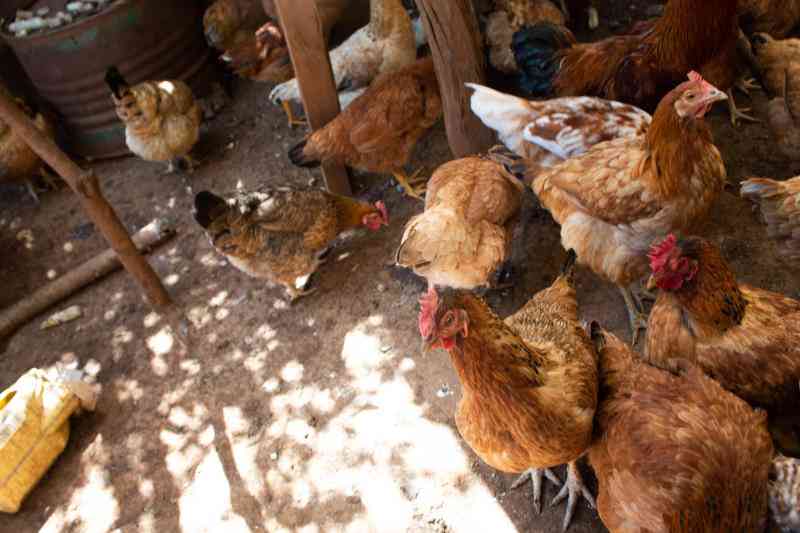Farming is business. And like any other business, a farm business plan is essential before you start up any farming venture. In today’s world, agriculture is more complex and more variable than it was 100 years ago. There are changing markets, high costs, low profit margins, diverse ways to raise cattle and produce crops and niche markets.
Making bullet points of what you want to do, how you want to do it, and what you’re willing to do to get there is the best way to start. Brainstorm about your goals and objectives. It’s much more effective to run a business when you have a goal in mind to reach rather than having vague farming ideas.
The benefits of a well-prepared business plan
A farm business plan will provide you with a clear strategy and objectives. A good plan will give you direction and keep you and your staff focused. In writing your business plan, you may make mistakes which can be corrected on paper prior to implementing your plan, which can save you money. The farm plan demonstrates the seriousness of your intentions to banks, investors, colleagues and employees.
It can be used as a measure for you to foresee/anticipate problems and take appropriate action immediately. All your ideas can be incorporated into the business plan to become a reality.
The planning process affords you the opportunity of adopting a step-by-step approach in preparing for the future achievement and risks of your farming venture. At the end of the process, you should be confident that the plan will work.
The good business plan involves research on the external and internal business environment like competitors, suppliers and consumers, which can be translated into a detailed action plan showing the areas of competitive advantage and how you will combat problems.
Appraise the internal forces such as those you have control over such as what breeds and varieties you choose, whether you want intensive or extensive operation, how you feed your animals, organic or conventional.
External forces like those you have no control over such as the weather, the topography and soil-type, local, national and international industry issues, market prices, product demand and consumer preferences.
You can use the business plan to identify opportunities, analyse the life cycle of the farming enterprise and each activity in the plan for capital requirements. Milestones with time frames can assist the business in achieving its objectives within the stipulated schedules.
Business plans have many more direct benefits for the farmer. The planning process forces the farmer to systematically consider all facets of the farming business. In so doing, you become more knowledgeable of the farming business, the industry and the market. Completing a business plan can be a time-consuming activity, but well worth the effort.
Because farmers operate in an ever-changing environment, the plan should be revisited periodically to be sure that the business is headed in the proper direction or to formally alter the farm’s course if circumstances dictate that this is necessary.
Again, the systematic review of the business plan forces the owner, and potentially others, to look at the business as a whole and make better-informed decisions.
Do a SWOT analysis
Strengths and weaknesses are the internal or controllable characteristics of a business. Opportunities and threats are external characteristics that are out of your, your farm business or an industry’s control. Such an analysis is simple and flexible to use in analysing your personal self, your business, or the industry.
Stay informed. Subscribe to our newsletter
Failure to plan is a plan to fail. A business plan with well-defined goals is a necessity for business management. Planning properly for your business is a tool for success, as a good plan maps the course of action to achieve your business goals and aspirations.
Farmers/producers/entrepreneurs in agriculture, especially the smallholder farmers, should use a business plan as the operational tool that directs each and every step in the business.
Important questions the plan addresses include where am I now? Where do I want to be? This is where you establish all your goals and objectives that you wish to achieve within the next three to five years for example. Include everything such as financing, marketing, herd health, breeding, birthing, weaning, culling, selling, pasture management, feed management and costs analysis. This question also addresses your personal, family and business goals.
How do I get there? This is the most important part of your plan, because this is the area where you put on paper how you want to get the things you want for a better you, family and farm. Brainstorming is great tool to use in this section, as you can always have a Plan B, C, D, just in case Plan A does not yield the desirable results.
How do I know I have arrived?
If you visualise your plan as a journey, it is not difficult to understand that you will need to measure your progress along the way and determine if you are moving towards your goals, spinning your wheels or rolling backwards.
This is done by defining, collecting and reviewing metrics, measurements and key performance indicators on a regular basis in order to validate your plan and decisions, direct your future activities, justify any modifications to the plan and intervene when things are not happening according to the plan. All your goals should be measurable. Metrics and measurements will give you the answer to this important question.
A vague business plan
Prospective entrepreneurs or writers of business plans make an assumption that the reader/funding institution/investor knows what the business venture is all about. Therefore, it is important to provide as much detail as possible and elaborate wherever necessary to clarify the needs of the business.
Unrealistic assumptions
Almost all writers of business plans assume that the business will succeed, hence they make unrealistic assumptions. It is advisable to benchmark against existing or similar businesses in the industry for acceptable standards. The goals of the plan must be realistic and achievable. Rather start small and then expand.
Risks
Many business plans ignore the risks or do not make provision for it. It is critical that the business plan should include all risks and provide information on how some of those risks can be mitigated.
One of the most important things you can do to ensure success in farming is to plan for the future. The planning process may take many hours to complete, especially if it is to provide a thorough representation of the farm. However, it will be a valuable asset as it forces a review of the farm, unites the collective labour force of the farm to work toward a set of common goals, and allows outsiders to gain a detailed understanding of the farm’s past, present and future.
Business planning is not applicable only to large farms. Smaller agricultural businesses, which are often family owned, stand to benefit at least as much from planning as do larger farms.
The writer is an expert and consultant in sustainable agriculture and innovations.
 The Standard Group Plc is a
multi-media organization with investments in media platforms spanning newspaper
print operations, television, radio broadcasting, digital and online services. The
Standard Group is recognized as a leading multi-media house in Kenya with a key
influence in matters of national and international interest.
The Standard Group Plc is a
multi-media organization with investments in media platforms spanning newspaper
print operations, television, radio broadcasting, digital and online services. The
Standard Group is recognized as a leading multi-media house in Kenya with a key
influence in matters of national and international interest.
 The Standard Group Plc is a
multi-media organization with investments in media platforms spanning newspaper
print operations, television, radio broadcasting, digital and online services. The
Standard Group is recognized as a leading multi-media house in Kenya with a key
influence in matters of national and international interest.
The Standard Group Plc is a
multi-media organization with investments in media platforms spanning newspaper
print operations, television, radio broadcasting, digital and online services. The
Standard Group is recognized as a leading multi-media house in Kenya with a key
influence in matters of national and international interest.






